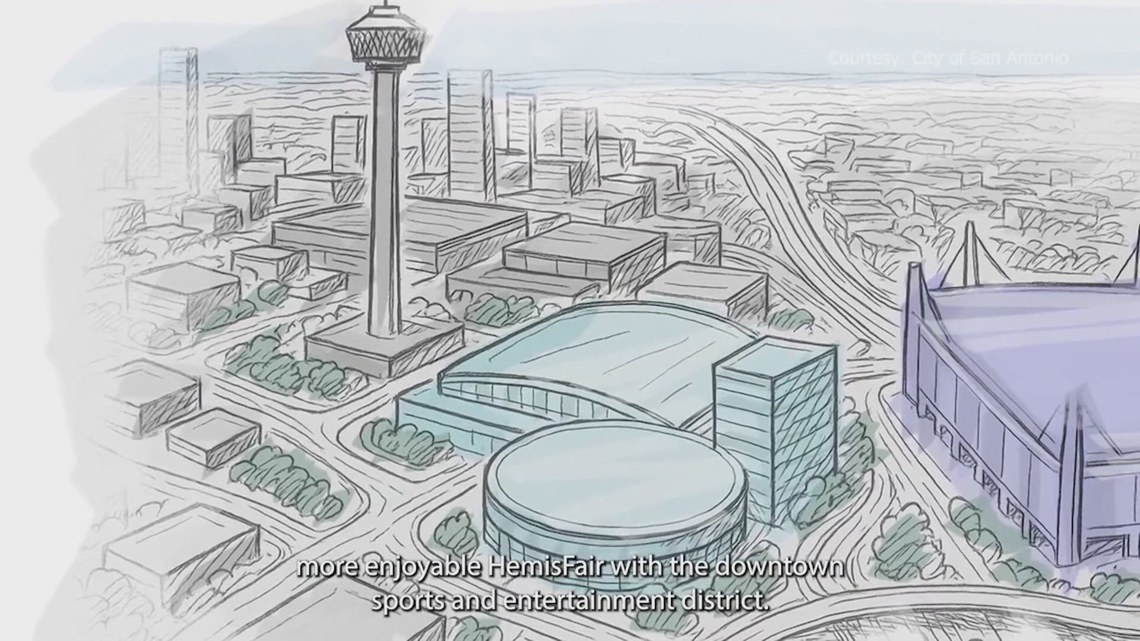
Aug. 21 is when City Council will consider a non-binding terms, outlining the City’s commitment to fund its portion of the new arena through a bond structure.
SAN ANTONIO — The San Antonio City Council on Wednesday reviewed both the projected economic benefits of Projected Marvel and feedback gathered during numerous community engagement workshops, just weeks before a decision is to be made regarding a non-binding terms sheet.
Project Marvel is the city’s multi-billion-dollar vision to enhance downtown with a sports and entertainment district, anchored by a new Spurs arena and surrounded by upgraded venues, mixed-use development and expanded visitor experiences.
Wednesday’s meeting began with a presentation by Abel City, the organization that helped facilitate a series of workshops over two months.
From June 24 through July 22, more than 1,400 San Antonio residents took part in 10 separate two-day workshops where they weighed in on the project and its funding strategy.
During the presentation, it was revealed that residents expressed a desire for greater transparency around costs and construction timelines, as well as a strong emphasis on community benefits. Key concerns included displacement risks, the impact on affordable housing, and how the development might impact small businesses and the overall walkability of the downtown area.
In addition to building a new state-of-the-art arena for the Spurs, the plan includes a major expansion of the Henry B. Gonzalez Convention Center, upgrades to the Alamodome, and construction of a 4,000 to 5,000-seat indoor music venue. These public investments would be complemented by nearly 25 acres of private sector development, including housing, hotels, restaurants, retail and office space, all designed to create a walkable, year-round destination in the city’s urban core.
Economic consultants indicated to the council that the entire Sports and Entertainment District could generate more than $18.7 billion in cumulative economic output over the next 30 years, while supporting over 3,300 full and part-time jobs annually. The project is also projected to bring in $351 million in new city tax revenue over three decades and attract 2.4 million annual visits from both locals and out-of-town guests to help compliment the array of new and revamped venues.
Meanwhile, the convention center expansion is projected to add over 330,000 new attendee days and nearly 214,000 hotel room nights annually. Improvements to the Alamodome would help the city stay competitive in attracting major concerts, sports events, and festivals, while the indoor music venue would help draw mid-sized touring acts that currently bypass the market.
Public comments at the meeting revealed a City still divided. Some speakers voiced opposition, arguing that public dollars would be better spent addressing urgent issues like homelessness and affordable housing.
“No one needs a basketball court,” said San Antonio resident Molly J. “We need housing. We need shelter-in-place. We need pallet home villages.”
“We are asking that you please postpone this vote, allow us to be educated, allow us to examine these studies and we are demanding an independent economic study,” said COPS Metro Alliance’s Father Jimmy Drennan.
Others urged the council to take the long view, citing the opportunity for downtown revitalization, job creation and long-term economic growth.
“I would ask madame mayor and council, please come back in two weeks, let’s have an agreement, let’s start moving forward with more details and find a solution to continue to invest in the future of San Antonio,” said Pat Frost, chair of the San Antonio Chamber of Commerce.
“Without investing and without change, there’s no possibility of growth,” said resident Nathan Whitman. “Your money’s just going to sit where it is. It’s never going to grow. I support the continued process of this project.”
On August 21, the council is expected to vote on a non-binding term sheet outlining the City’s commitment to fund its portion of the new arena through a bond structure. That contribution is estimated to range between $350 million and $500 million, backed by hotel occupancy taxes, lease revenue, and Project Finance Zone allocations, not property taxes.
